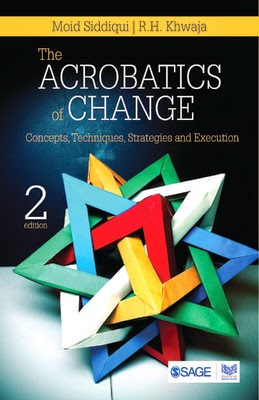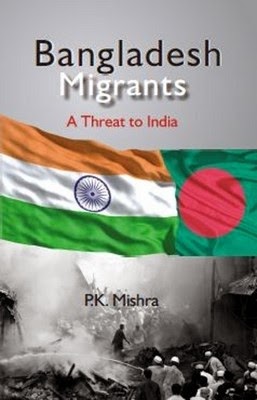Poor Students: Market-Oriented Education Reforms by K. Ravi Kumar from Gyan Books.
 Inequality in India\'s educational attainment is increasing at a faster rate since independence. Poor household, weaker sections, tribal societies and backward regions are left-out in this educational development. However, rich and elite students are getting high quality education in private sectors educational institutions or in foreign universities abroad. Quality and cost of education services are influenced by many factors which are beyond the boundaries of educational institutions.
Inequality in India\'s educational attainment is increasing at a faster rate since independence. Poor household, weaker sections, tribal societies and backward regions are left-out in this educational development. However, rich and elite students are getting high quality education in private sectors educational institutions or in foreign universities abroad. Quality and cost of education services are influenced by many factors which are beyond the boundaries of educational institutions.
India\'s in equality i n educational development has been fueled by colonial administrative error and this led to education market failures, especially in educationally deprived regions. Erstwhile Zamindari areas and scheduled districts are still educationally deprived. Socialist model of economic development ruined the economy, since 1991, India\'s economy adopted market driven economy but marketisation has not happened in education sector.
RTE 2009, well intended legislation, is spoiling India\'s school education system, especially public education service due to faulty design and lack of marketisation of education sector in the today\'s market driven economy. This inte-disciplinay book analyses the reasons for this inequality in equity, quantity and quality of education on the basis of grssroot level experience and field survey. This book introduces the con cept of marketisation of education service to reform India\'s education system.In our Education section, Rs. 975, in hardback, 327 pages, ISBN :
9789351280583
Ethnicity In North East India by Sarthank Sengupta from Gyan Books.
In the present-day world, the study of ethnicity has been a major concern of anthropology, and other branches of social sciences. Ethnicity is not a simple and isolable social observable fact, rather interconnected to many other multifaceted societal issues. Probing and understanding ethnicity requires numerous dimensions as it operates and channelise through various ways and means.
Ethnicity in North East India is a collection of eleven original essays offered by renowned teachers and experienced researchers to acquaint wide readers about the dynamic nature of ethnicity in North East India to understand the mechanism according to which the character of its momentary commonality becomes clearly visible. The book will be interest to scholars, policy makers and policy analysts, and students of social sciences particularly those concerned with North East India.In our Northeast Studies section, Rs. 550, in hardback, 183 pages, ISBN :
9788121212168
Knowledge Management And Information Technology by C.S.R. Prabhu from Gyan Books.
This books deals with Knowledge Management, (KM) techniques and methodologies in an, organisation. Chapter1 covers the different, approaches to KM. Chapter 2, 3 ,4 cover the three, phrases of KM : MD, Build, Operate. Chapter 5, deals with Critical Success Factors in KM, implementation. Chapter 6 deals with Enablers for, KM.
Chapter 7 talks about IT components for, KM. Chapter 8 deals with Knowledge Transfer., Chapter 9 deals with advanced KM as Distributed, KM or DKMS. Chapter 10 deals with KM with a, new model: Object Knowledege Model (OKM)., This book presents a new approach to Knowledge, Management (KM) from the perspective of, Information Technology.In our Management Studies section, Rs. 570, in hardback, 191 pages, ISBN :
9788121212199
Relevance of Swami Vivekananda In 21st Century by Sunita from Gyan Books.

Today when we have finished the first decade of 21st century and it has been claimed by number of reliable national and international agencies that India is growing and making a respectable place into the international system; But in reality we are also struggling with many burning issues which are basic in nature.Today when we are celebrating 150th birth anniversary this book will be highly useful to adopt and implement his thoughts to resolve the problems.
Inspite of her innumerable linguistic, ethnic, historical, regional and religious diversities, India has had from time immemorial a strong sense of culture unity. It was however, Swami Vivekanand who revealed the true foundation of this culture and thus clearly defined and strengthened the sense of unity as a Nation. He is considered as a key figure in the introduction of Hindu Philosophy of Vedanta and Yoga to the western world and is also credited for bringing Hinduism to the status of a major world religion during the end of the 19th century. Swamiji gave a proper spiritual heritage and thus gave them pride in the past.
This book is the tribute to the great Indian icon and social reformer Swami Vivekananda whose life itself is the message for the whole humanity. This book would be highly useful for students, researchers, academicians and the common readers who have interest in the life and teachings of Vivekananda.In our Philosophy section, Rs. 630, in hardback, 173 pages, ISBN :
9789351280187
Towards A Buddhist Social Philosophy by Amal Kumal Harh from Gyan Books.
 Towards a Buddhist Social Philosophy,is a welcome addition to the growing literature of engaged Buddhism. The author has gone to the sources in the Pali Canon, and gleaned traces of sources of social concern in the earliest teachings of the Buddha. His ministry spanned the ancient Indian kingdoms like Kashi, Koshal and Magadh, and he was aware of the problems of life in society. How to live with others? Buddhist moral thought flowers in a non-solipsistic universal where there are others, and we are afflicted with existential traits such as attachment, hatred and delusion.
Towards a Buddhist Social Philosophy,is a welcome addition to the growing literature of engaged Buddhism. The author has gone to the sources in the Pali Canon, and gleaned traces of sources of social concern in the earliest teachings of the Buddha. His ministry spanned the ancient Indian kingdoms like Kashi, Koshal and Magadh, and he was aware of the problems of life in society. How to live with others? Buddhist moral thought flowers in a non-solipsistic universal where there are others, and we are afflicted with existential traits such as attachment, hatred and delusion.
All disharmonies arise from these three so-called non-virtuous propensities, and by adopting a therapeutic method the Buddha sought to settle the issues of disunity, disharmony and discrimination. Through the ten chapters, the author has raised issues pertaining to contemporary concern, social and political, Marxism in Buddhist societies in Asia, neo-Buddhism of Ambedkar, etc. There is much that is novel and daring in the analysis of issues, and deserves to be perused by all serious readers, students and reasearchers interested in the role of the Buddhist world-view in modern India.In our Philosophy section, Rs. 485, in hardback, 160 pages, ISBN :
9789351280798
Nano Mushroom Identifier by Rouf Hamza Boda from Gyan Books.

Nano Mushroom Identifier \'Nano Mushroom Identifier\' is a beginner\'s guide for mushroom identification. It gives nut shell information to those who are interested in mushroom collection. Mushroom hunting is actually an outdoor activity, and this book clears the basic concepts of mushroom collection, preservation, photography and identification. It provides a basic list of equipments which are needed for mushroom collection.
Different characters used in mushroom identification have been given in a systematic order. Morphological and reproductive characters, used in mushroom identification have been explained logically. Mushroom microscopy has also been given in detail. Use of senses in mushroom identification has been stressed for some particular mushrooms.
A brief introduction about the mushroom world has also been discussed in the beginning of the book. This book has been written in simple language so that even a layman can understand it. Basic diagrams have been added which clear the various concepts about the mushrooms. Book is immensely beneficial for scholars, researchers, farmers and students.In our Agricultural Sciences section, Rs. 360, in hardback, 58 pages, ISBN :
9789380222585






























